ATEX Directive and Explosion Protection Document
What is ATEX ?
The term ATEX originates from the French phrase ATmosphères EXplosibles, which translates to “Explosive Atmospheres.” The ATEX Directive process was initiated with the implementation of two European Union directives known as ATEX 137 and ATEX 95, aimed at ensuring safety in explosive environments. The ATEX 137 Directive was initially named “Minimum requirements for improving the safety and health protection of workers potentially at risk from explosive atmospheres,” and later revised and renamed as ATEX 153. In our country, ATEX 153 (formerly ATEX 137) Directive is known as the “Regulation on the Protection of Workers from Hazards of Explosive Atmospheres“ and is used to identify explosive atmospheres in workplaces.
Which Facilities are Covered by ATEX?
Enterprises that store, produce, or fill flammable chemicals are covered by the ATEX Directive, regardless of the storage quantities. Flammable gases/vapors, when they reach certain concentrations in the air and encounter an ignition source, can cause explosions. While there are no restrictions for chemicals in the gaseous state under ambient conditions, chemicals in liquid form are evaluated based on their Flash Points. Flammable liquids with a flash point lower than the ambient temperature are unable to produce enough vapor to cause an explosion.
Facilities that use flammable liquids as solvents in production, process petroleum products, store and utilize them, use gases such as hydrogen and acetylene for rolling processes, or use natural gas for steam generation in boiler rooms should be evaluated within the scope of the ATEX Directive.
| Chemical | Flash Point (°C) | Scope (25 °C) |
| Methanol | 9 | Included in Scope |
| Ethanol | 12 | Included in Scope |
| Diesel | 55 | Excluded in Scope |
| Formalin (%37) | 60 | Excluded in Scope |
When examining the table, it can be observed that Methanol and Ethanol are included in the scope as their flash points are below ambient temperature. Diesel and Formalin, on the other hand, are excluded from the scope as their flash points are above ambient temperature.
The storage or utilization of chemicals may alter the assessment of their inclusion based on various process variables. For instance, if a chemical with a flash point of 50°C is stored within the temperature range of 55-60°C, it would fall within the scope. Flammable dust, when present in a specific amount per unit volume in the air, can cause explosions in the presence of oxygen and an ignition source. Flammable dust is considered explosive when the particle diameter is smaller than 500 microns (0.5 mm).
| Chemical | Particle Diameter micron, µ | Scope (30°C) |
| Milk Powder | 450 | Included in Scope |
| Aluminum powder | 300 | Included in Scope |
| Carbonate | 300 | Out of Scope (not flammable) |
| Sawdust | 1000 | Excluded in Scope |
When examining the table, it can be observed that the particle diameters of milk and aluminum powders are below 500 microns. Additionally, as these materials exhibit flammable properties, they are considered within the scope in terms of dust explosions. When evaluating sodium bicarbonate, despite having a particle diameter below 500 microns, it is not within the scope as it does not exhibit flammable properties. Sawdust, on the other hand, is excluded from the scope due to its particle diameter being larger than 500 microns, despite exhibiting flammable properties.
The sectors where dust explosions occurred according to the research conducted by the Chemical Safety Board (CSB) between 1980 and 2005, as well as the equipment where explosions occurred and their percentage distribution based on the statistics obtained from the HSE’s examination of 303 incidents related to dust explosions, are presented in the following graphs.
As seen in the graph, the food industry is evaluated within the scope due to the presence of organic dust, the wood-furniture-timber industry due to the presence of wood dust, the metal industry due to the presence of combustible metal dust, and the chemical industry due to various combustible dust raw materials and products that can cause dust explosions. Other sectors, such as coal processing and iron-steel industries, are included in this scope due to the presence of coal dust.
The ATEX 95 Directive is referred to as “Equipment and protective systems intended for use in potentially explosive atmospheres” and was later revised and renamed as ATEX 114. ATEX 114 (formerly ATEX 95) Directive is known as the “Regulation on Equipment and Protective Systems Intended for Use in Potentially Explosive Atmospheres“ in our country and is used to determine the requirements for equipment to be used in explosive atmospheres. Detailed information about equipment and protective systems used in potentially explosive atmospheres can be found in the “ATEX 2014/34/EU Guidelines.” In addition to these directives, the “Regulation on Fire Protection of Buildings“ is used as a reference for the storage of flammable liquid chemicals, and companies are required to comply with the rules stated therein.
In addition to these directives, numerous standards referenced by these directives are implemented in ATEX activities.
At ProSCon Engineering, regular checks are conducted on changes and updates in regulations and standards, and document preparation processes are carried out using the most up-to-date methods.
Current Standard List (Click on the standard name to download the relevant ATEX standard).
Relevant Standards |
Standard Name |
Standard Content |
| TS EN 60079-0 | Electrical equipment used in explosive gas atmospheres – part 0: General Specifications | Information on the properties and protection types of ex-proof equipment and equipment marking examples. |
| TS EN 60079-1 | Explosive Gas Atmospheres – Part 1: Equipment protected by flameproof enclosures “d” type | Information on electrical cable conduits, types of enclosures, and fastenings for Ex-proof equipment with “d” type protection. |
| TS EN 60079-2 | Explosive Gas Atmospheres – Part 2: Equipment protected by pressurized enclosures “p” type. | |
| TS EN 60079-5 | Explosive Gas Atmospheres – Equipment protected by powder filling “q” type for use in explosive dust atmospheres. | |
| TS EN 60079-6 | Explosive Gas Atmospheres – Part 6: Equipment protected by oil immersion “o” type. | |
| TS EN 60079-7 | Explosive Atmospheres – Part 7: Increased safety “e” type of protection for equipment. | |
| TS EN 60079-10-1 | Explosive Atmospheres – Part 10-1: Classification of areas – Explosive gas atmospheres. | |
| TS EN 60079-10-2 | Explosive Atmospheres – Part 10-2: Classification of hazardous areas – Combustible dust atmospheres. | |
| TS EN 60079-11 | Explosive Gas Atmospheres – Part 11: Intrinsic safety “i” type of protection for equipment. | |
| TS EN 60079-13 | Explosive Atmospheres – Part 13: Equipment protection by pressurized room “p” and artificially ventilated room “v”. | |
| TS EN 60079-14 | Electrical Apparatus for Explosive Atmospheres – Part 14: Design, selection, and installation of electrical installations. | |
| TS EN 60079-15 | Electrical Apparatus for Explosive Atmospheres – Part 15: Equipment protection by type “n”. | |
| TS EN 60079-16 | Electrical Apparatus for Explosive Gas Atmospheres – Part 16: Artificial ventilation for the protection of analytical buildings. | |
| TS EN 60079-17 | Explosive Atmospheres – Part 17: Inspection and maintenance of electrical installations. (IEC 60079-17: 2013) | |
| TS EN 60079-18 | Explosive Atmospheres – Part 18: Equipment protection by encapsulation “m” type. | |
| TS EN 60079-19 | Electrical Apparatus for Explosive Atmospheres – Part 19: Repair, overhaul, and reclamation. | |
| TS EN 60079-20-1 | Electrical Apparatus for Explosive Atmospheres – Part 20-1: Material characteristics for gas and vapor classification – Test methods and data. |
What is Explosion Protection Document (EPD)?
The Explosion Protection Document (EPD) is a document prepared in accordance with European Union standards, which involves calculating the explosive atmospheres created by flammable chemicals in gas/vapor and dust form and providing necessary recommendations for implementing the most suitable and safe measures for the facility.
At Proscon Engineering, during the process of preparing the Explosion Protection Document (EPD), each potential release source in the facility is carefully examined, and the most hazardous scenarios are thoroughly evaluated. Ensuring worker health and safety, the document provides the businesses with the safest and most cost-effective solutions to mitigate the identified hazardous areas.
The hierarchy of improvements to achieve sufficient safety as determined through the examinations conducted within the scope of the Explosion Protection Document (EPD) is as follows:
-
- Elimination of the release source causing the hazardous area.
- Prevention of hazardous area formation if the release source cannot be eliminated (ventilation, limitation of release rate, etc.).
- Elimination of ignition sources if the formation of a hazardous area cannot be prevented (use of Ex-proof equipment, precautions against static electricity, etc.).
During the preparation of the Explosion Protection Document (EPD), continuous communication is maintained with the employees and authorized personnel of the facility, both in the field and office settings. This ensures that the necessary information is obtained for document preparation and allows the employees of the client company to actively participate in the conducted activities, thereby increasing their awareness and understanding of ATEX-related matters.
In order to ensure complete safety against explosions and to guarantee that safety measures have been implemented, ProSCon Engineering offers the following services:
Preparation of Explosion Protection Document (EPD)
- Identification of Hazardous Areas
- Marking of Hazardous Areas on the Facility Layout and Schematization with Side Views
- Compilation of lists for each hazardous area by identifying ignition sources
- Presentation of improvement and ATEX compliance recommendations
- Pre- and post-work informative training sessions
Preparation of Equipment Compliance Report
- Visual Inspection
- Compilation of Equipment List and Photographing of Equipment
- Creation of Non-conformity List, demonstrating improper conditions with photographs
If you are interested in reviewing technical articles related to the ATEX Directive and Explosion Protection Document, you can use the links provided below:




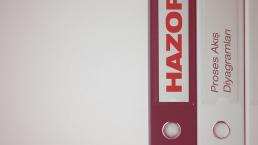


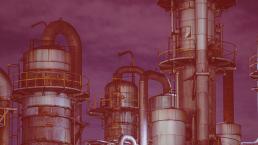

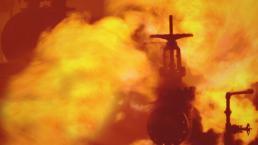


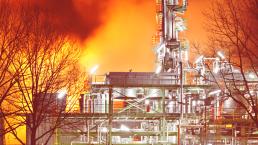

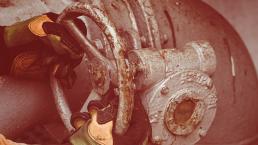

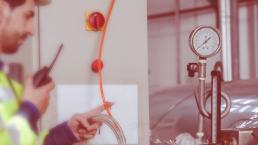


 Takipte Kalın
Takipte Kalın